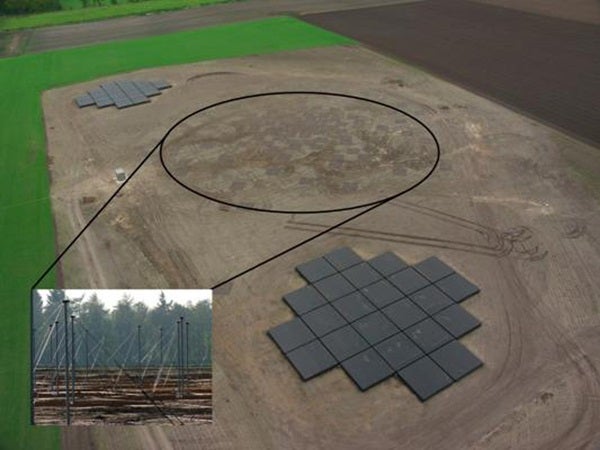A team of astronomers and engineers at ASTRON, the Netherlands Institute for Radio Astronomy, has successfully detected correlated interferometric radio signals, called “fringes,” from the sky with the first three, recently completed, full-scale Low Frequency Array (LOFAR) stations.
The Low Band Antenna (LBA) stations were pointed at Cygnus A, a very powerful radio galaxy associated with an ultra-massive black hole. The signals from this galaxy traveled for 600 million years to get here. Once the signals were received at the LOFAR stations they started a new and much shorter journey via the fiber network that is connected to the IBM Blue-Gene supercomputer in Groningen. From there, the correlated data was sent to Dwingeloo for final processing.
The team observed the entire frequency band from 30 to 78 MHz at a spectral resolution of 763 Hz. A day later, the experiment was successfully repeated using the High Band Antennas (HBAs) between 120 and 168 MHz. The stations that were used were between 3 to 12 miles (5 to 20 kilometers) apart. Once completed, LOFAR will consist of more than 50 stations distributed across Europe with baselines ranging from 98 feet up to 930 miles (30 meters up to 1500 kilometers).
“This may seem quite straightforward,” said Michiel Brentjens, one of the astronomers at ASTRON, “but many things had to go right to get these results. If one element in the chain does not work, you do not get the right data on your screen.” According to Brentjens, the data quality is superb, much better than expected at this early stage in the telescopes commissioning phase. “This is a major step forward for the LOFAR project,” said Michael Garrett, general director of ASTRON. “The first results give us a taste of what will follow; we are truly opening up a new window on the early universe.”










